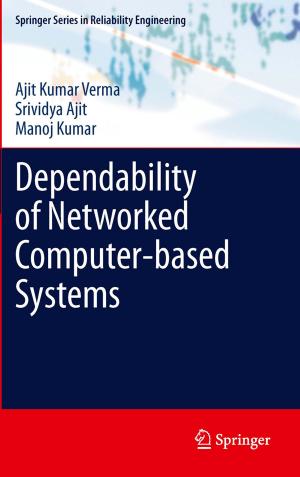Computational Techniques for Structural Health Monitoring
Nonfiction, Science & Nature, Technology, Engineering, Mechanical, Computers, Advanced Computing, Artificial Intelligence, General Computing| Author: | Srinivasan Gopalakrishnan, Massimo Ruzzene, Sathyanaraya Hanagud | ISBN: | 9780857292841 |
| Publisher: | Springer London | Publication: | August 1, 2011 |
| Imprint: | Springer | Language: | English |
| Author: | Srinivasan Gopalakrishnan, Massimo Ruzzene, Sathyanaraya Hanagud |
| ISBN: | 9780857292841 |
| Publisher: | Springer London |
| Publication: | August 1, 2011 |
| Imprint: | Springer |
| Language: | English |
The increased level of activity on structural health monitoring (SHM) in various universities and research labs has resulted in the development of new methodologies for both identifying the existing damage in structures and predicting the onset of damage that may occur during service. Designers often have to consult a variety of textbooks, journal papers and reports, because many of these methodologies require advanced knowledge of mechanics, dynamics, wave propagation, and material science. Computational Techniques for Structural Health Monitoring gives a one-volume, in-depth introduction to the different computational methodologies available for rapid detection of flaws in structures.
Techniques, algorithms and results are presented in a way that allows their direct application. A number of case studies are included to highlight further the practical aspects of the selected topics. Computational Techniques for Structural Health Monitoring also provides the reader with numerical simulation tools that are essential to the development of novel algorithms for the interpretation of experimental measurements, and for the identification of damage and its characterization.
Upon reading Computational Techniques for Structural Health Monitoring, graduate students will be able to begin research-level work in the area of structural health monitoring. The level of detail in the description of formulation and implementation also allows engineers to apply the concepts directly in their research.
The increased level of activity on structural health monitoring (SHM) in various universities and research labs has resulted in the development of new methodologies for both identifying the existing damage in structures and predicting the onset of damage that may occur during service. Designers often have to consult a variety of textbooks, journal papers and reports, because many of these methodologies require advanced knowledge of mechanics, dynamics, wave propagation, and material science. Computational Techniques for Structural Health Monitoring gives a one-volume, in-depth introduction to the different computational methodologies available for rapid detection of flaws in structures.
Techniques, algorithms and results are presented in a way that allows their direct application. A number of case studies are included to highlight further the practical aspects of the selected topics. Computational Techniques for Structural Health Monitoring also provides the reader with numerical simulation tools that are essential to the development of novel algorithms for the interpretation of experimental measurements, and for the identification of damage and its characterization.
Upon reading Computational Techniques for Structural Health Monitoring, graduate students will be able to begin research-level work in the area of structural health monitoring. The level of detail in the description of formulation and implementation also allows engineers to apply the concepts directly in their research.















